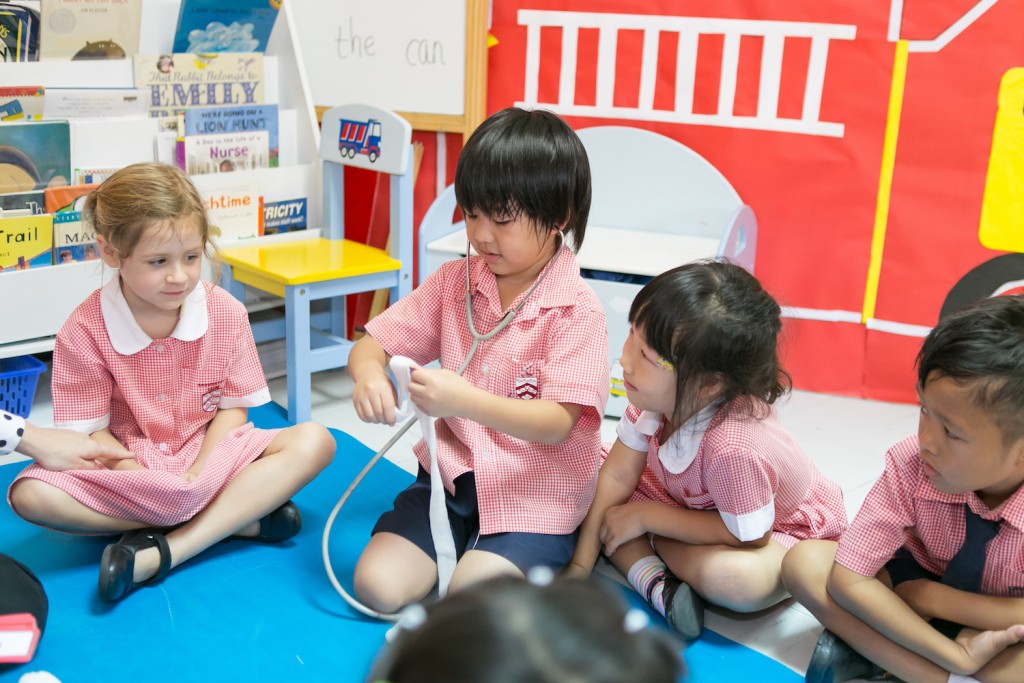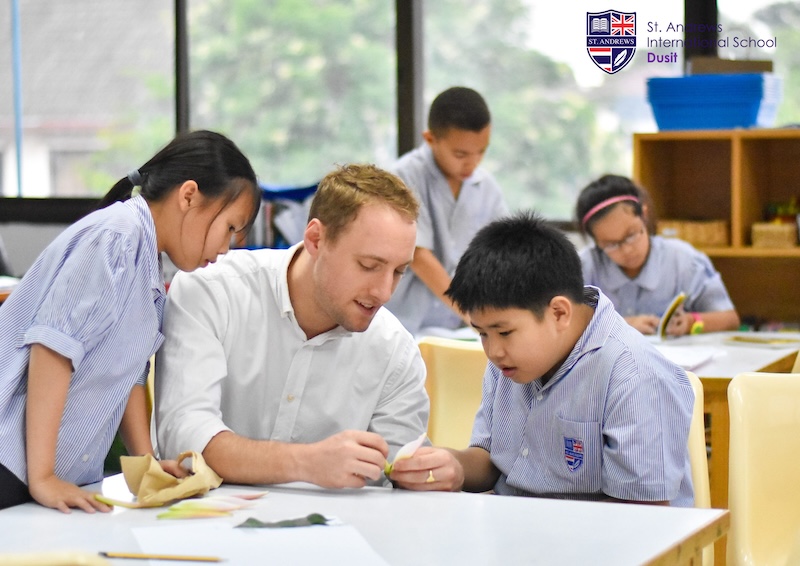With a child-centric learning approach at the Early Years levels, there is a certain magic happening. The children, bright-eyed and eager, want to learn – and the teachers are following their lead.
In a nutshell, the children are in charge of their own learning, and the teaching staff are facilitating their ideas. These experienced practitioners know precisely what level of attainment each child needs to meet, yet they locate it within the interests of the children.
At Bromsgrove, the Early Years teachers, from Pre-Nursery to Year One, have taken the time to ask the children for their input, creating a scheme of work that will keep them interested. They are not running some kind of crèche, or standing at the front of the room talking at the children. The adults talk with them.
One of the Reception classes has chosen buildings as their theme, for example. The children have become architects for the morning – drawing and designing towers and castles, and handwriting the type of building they have designed, before choosing materials to construct their ideas. The children are in constant dialogue with the staff, and each other, talking about colours, shapes, numbers, and the pros and cons of different materials.
The key skills they need to learn are integrated into everything they do. The teachers focus on play-based learning while keeping the students in conversation to find the gaps in their knowledge. They challenge their thinking, maintaining a proactive approach by reacting to their responses, regardless of age or attention span. Children are encouraged to go at their own speed, exploring further activities and developing skills for as long as their interest is sustained. Once their attention is lost, the teachers are ready to provide more options to keep the children learning as they play.
In another example, ‘What would you like to learn about next term?’ the class is asked, while sitting cross-legged on colourful mats. One boy suggests Fireman Sam. His teacher doesn’t laugh. She doesn’t ask for a better suggestion. She takes his idea seriously, and the class goes on to discuss Fireman Sam at length: his job, his purpose, his position in the community, and the other people that do similar jobs. Other children add doctors, then nurses, and policemen, to the mix. They agree on a theme that will focus on the emergency services.
Moreover, small classes include children from across the globe, and this creates the atmosphere of a multi-cultural family. In this family, communication and interaction are key, and the children want to talk to each other. They have broken through the language barrier and now choose to converse in their common language: English. Their fluency level is impressive, and the students even choose to use English instead of their mother tongue in the playground.
Two boys are sitting in the corner playing video games, happily chatting in English, despite the fact that they both speak Thai as their native language. The teacher isn’t within earshot, and there is no pressure to speak English, but it seems to come naturally. It is as if they walk into school in the morning and switch to English for the day.
Bromsgrove embodies a truly personalised education for each child, where exposure to multiple cultures enhance the learning experience. The benefits are clear: confident, happy children who are motivated to learn and communicate, through their own determination. What better foundation for a child’s educational career?
Editor’s note: This article is sponsored content from Bromsgrove International School Thailand.
















